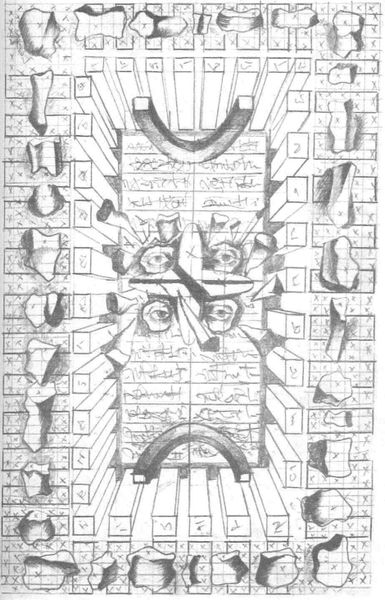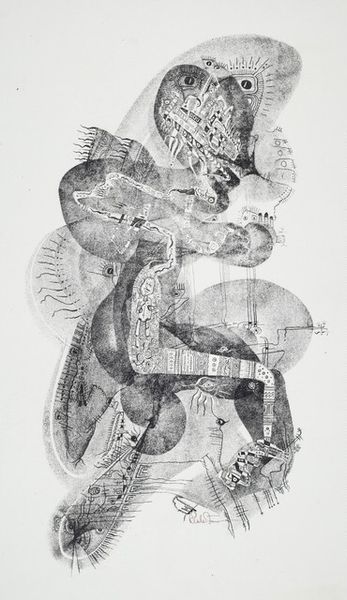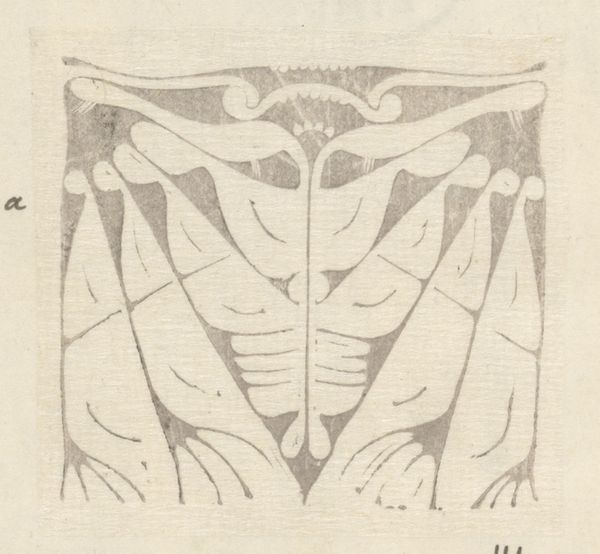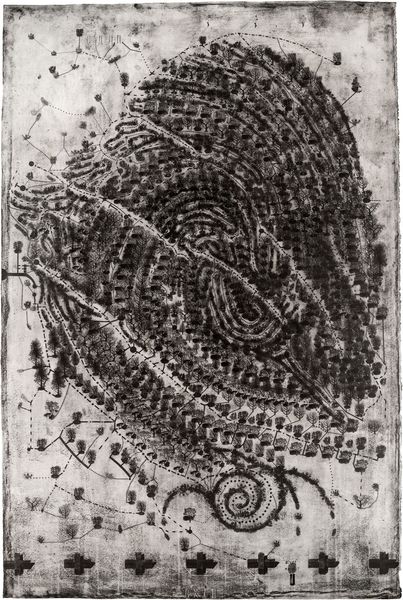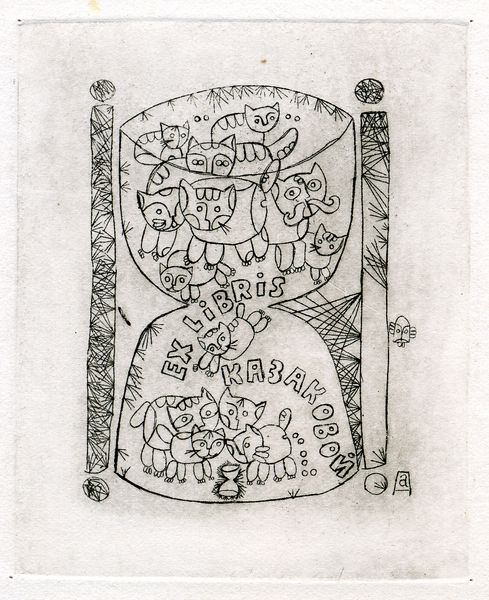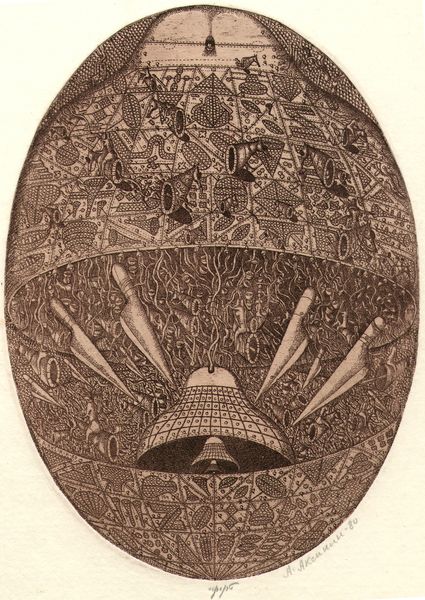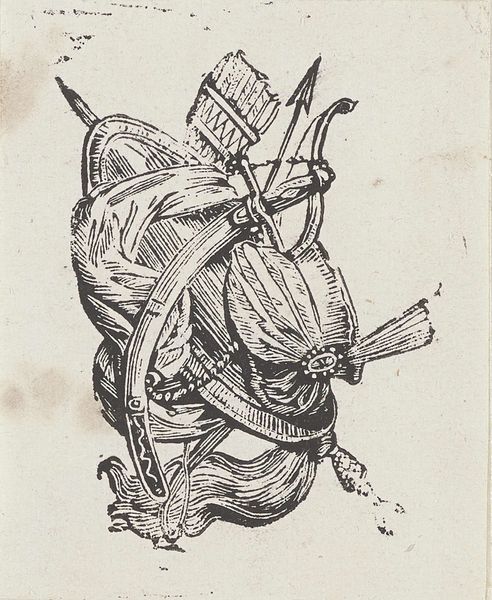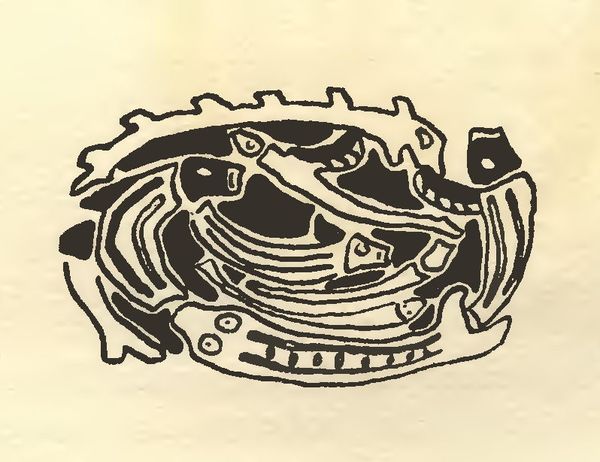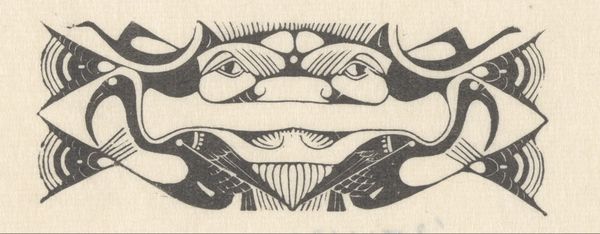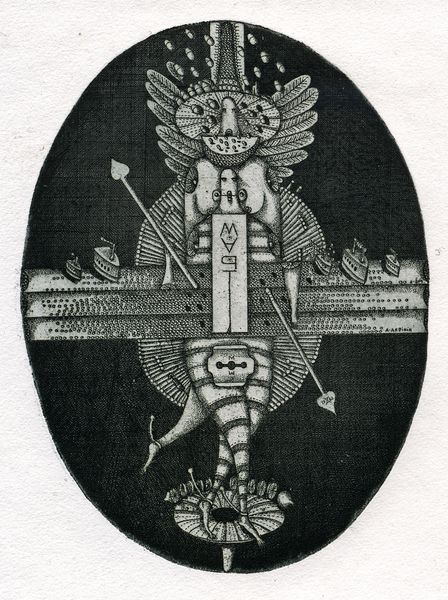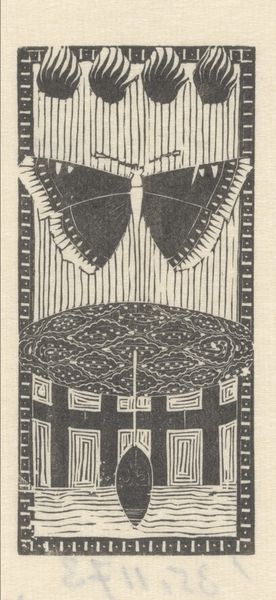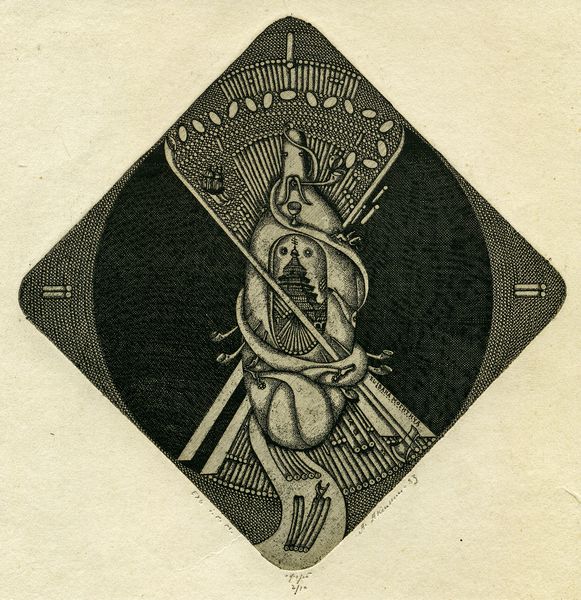
drawing, mixed-media, pencil
#
portrait
#
drawing
#
mixed-media
#
head
#
face
#
figuration
#
sketchwork
#
sketch
#
pen-ink sketch
#
pencil
#
surrealism
Copyright: Sorin Dumitrescu,Fair Use
Curator: This drawing immediately evokes a sense of calculated surrealism. A face is meticulously rendered, then disrupted—almost diagrammed—with an array of geometric forms. Editor: Indeed. The work before us, completed in 1978, is an illustration for Nichita Stanescu's "Epica Magna" by Sorin Dumitrescu. It’s primarily executed in pencil and mixed media on paper. It's fascinating to consider how the image accompanies Stanescu’s poetry, potentially visualizing its themes and narratives. Curator: The composition is undeniably striking. Dumitrescu segments the face horizontally, breaking it into strata. Within those bands float or are embedded a collection of shapes, suggesting deconstructed identity. Note, also, the delicate pencil work contrasting with some seemingly rapid, almost aggressive, mark-making around the perimeter. Editor: We might consider how Dumitrescu, through the medium of illustration, engages with broader socio-political undercurrents of the time. Surrealism provided artists a visual language to explore subconscious desires and dissent, especially within contexts with limited political freedoms. The use of such recognizable symbolism surely provoked thought. Curator: Precisely. And look at how the linear grid laid over the face fights against the illusionistic rendering of the eye and mouth. This creates a formal tension. Semiotically, the juxtaposition undermines any unified reading of the face as a site of coherent meaning. It almost negates legibility. Editor: That raises interesting questions about Dumitrescu’s relationship to Stanescu’s “Epica Magna”. As an artist creating work under a totalitarian regime, illustration, often dismissed as "lesser" than painting or sculpture, ironically offered a space for veiled social commentary and circulation. It might even have evaded more direct censorship. Curator: It seems more like an analysis than a rendering. Dumitrescu dissects a face into disparate parts, making it new by taking it apart. He also alludes to this reconstructive effort at the very bottom where the floating forms start coalescing towards a symbolic text. It's like he's visually dismantling an icon or belief. Editor: And understanding this work, as part of both a literary project and within the political dynamics of late 20th century Romania, helps us appreciate how seemingly simple illustrations became crucial avenues for exploring the complexities of personal and national identity under duress. Curator: I now find I see beyond that immediate fragmentation and feel a determined force driving at transformation through that disruption. Editor: I, too, feel that knowing its potential placement, this image carries a more substantial and considered visual weight than simply a sketch.
Comments
No comments
Be the first to comment and join the conversation on the ultimate creative platform.
